Our Blog is the best in different types of comics and funny stories read our latest different types of comics and funny stories and high in searches in google browser.We gives you a different types of comics and funny stories with best reading and watching features.Thanks for our all the viewers in coming our blog for watching or reading comics and watching funny stories. #Comedy And Funny Status thanks to all the viewers.
Tuesday, 2 June 2020
DARKHAWK #4-8 (1991)

Darkhawk meets his first nemesis: Savage Steel. He’s wearing body armor tech from Stane International.
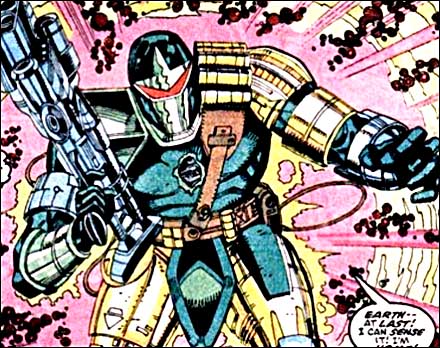
And meets another teenager named Portal, who has armor a lot like Darkhawk’s. And finally, he fights Lodestone, who will be around for one more Darkhawk story before disappearing forever.
Darkhawk knocks both of them out. Portal gets taken to The Vault, where he meets Captain America and the Guardsmen who work at the super-jail, but then Portal gets busted out by the U-Foes.
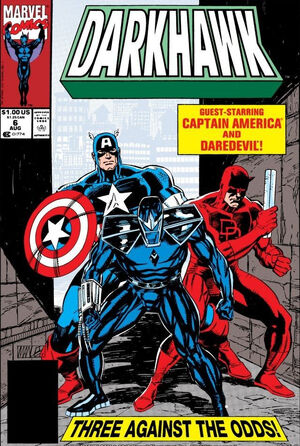
The U-Foes have learned that Portal’s armor can traverse dimensions, so they want it for themselves. Also, Daredevil is there for some reason.

The battle against the U-Foes is kind of fun, albeit pretty random.
Through it all, Darkhawk keeps thinking of his dead cop daddy and it makes him seek justice and not kill his enemies.
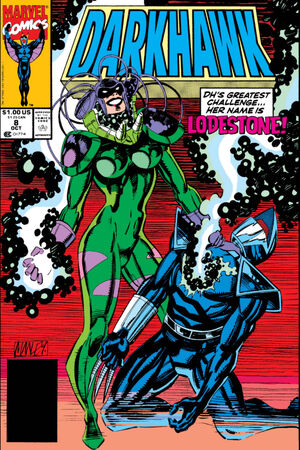
I’m whipping through these books because they’re pretty dull. Not bad, per se, just boring.
Creators: Danny Fingeroth – Writer
Mike Manley –
Grade: C-
The post DARKHAWK #4-8 (1991) appeared first on Berkeley Place.
from Berkeley Place https://ift.tt/2XulDO6
https://ift.tt/2XRZ9p2
Batman Beyond v6 #39 - “First Flight III” (2019) pencil &...
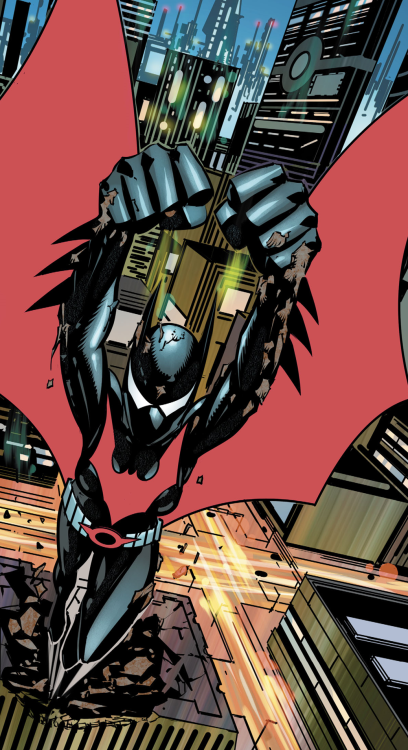
Batman Beyond v6 #39 - “First Flight III” (2019) pencil & ink by Inaki Miranda color by Chris Sotomayor
from Comics and nothin' but https://ift.tt/2XpnEed
https://ift.tt/36SaCZY
Monday, 1 June 2020
Amazing Mary Jane #4 (2019) pencil & ink by Carlos...
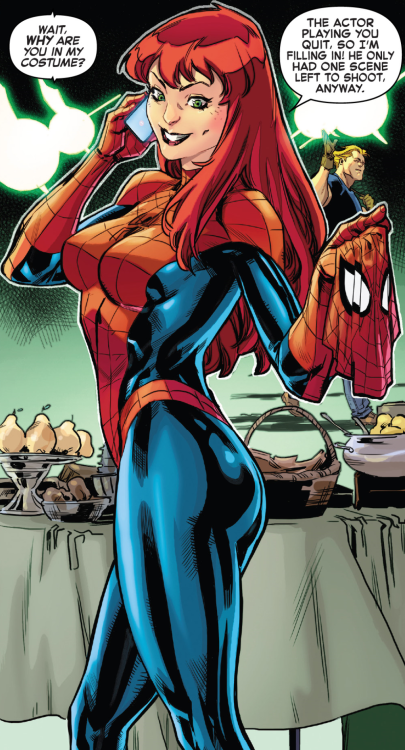
Amazing Mary Jane #4 (2019) pencil & ink by Carlos Gomez color by Carlos Lopez
from Comics and nothin' but https://ift.tt/3crYcsK
https://ift.tt/3gCSBTM
The Amazing Media Footprint of Spider-Man
Since the launch of The Amazing Spider-Man series in 1977, the titular hero has enjoyed mainstream penetration like few others on the big screen. The Spider-Man trilogy, between 2002 and 2007, propelled him further into pop culture – and it is not just in cinema where the impact has been felt.
In this article, we will consider the far-reaching places Spider-Man has made his mark. From lending his likeness to slots games in UK online casinos, to merchandise and video game crossovers.
Gaming
Perhaps Spidey’s broadest legacy is in the world of video games. The titles featuring the character are almost too numerous to count, and they include outings on 15 different gaming platforms across four decades.
The first Spider-Man game was released on the Atari 2600 and offers classic action featuring the pursuit of criminals across skyscrapers. It even includes a cameo appearance from the Green Goblin, whose bombs you must avoid.
Text-driven graphical adventure games followed, including an appearance in the Questprobe series of games, before a return to a more modern format in the late 80s and early 90s. Fast forward nearly 30 years and games like Marvel’s Spider-Man have helped keep the character at the forefront of the industry.
The title attracted rave reviews from critics and has helped to keep the franchise front of mind across the world in between big screen releases. And while many game adaptations of films flop horribly, Spider-Man has enjoyed a relatively smooth transition between formats, including sub-sectors like casino gaming, where his likeness is often seen in slot games.
TV shows
It’s common to to see films make the switch to the small screen, with live action and animated serialisations helping to entertain existing audiences and build new ones. And Spider-Man is no exception.
The majority of TV shows created featuring Spider-Man have been animated, starting with the original series in 1967, through to 2021’s upcoming Spidey And His Amazing Friends.
That the franchise can engage with audiences young and old is another string to its bow, and a huge advantage in the marketplace, especially at a time when streaming platforms like Netflix, Disney Plus and Amazon Prime are commissioning a seemingly endless amount of original shows.
Merchandise and total value
Elsewhere, the Spider-Man merchandise industry is big business, with Amazing Fantasy #15 – the first comic to feature the character – worth just under $300,000. But although it’s the comics that command the biggest prices, everything from air fresheners to apple juice drinks can also be snapped up.
The current Sony-Disney split over Spider-Man – a result of the apparent divorce of Sony from Disney-Marvel – is helping to dive up the value of the IP. Far From Home, released in 2019, grossed $1.232bn at Box Office, from a budget of $160m, so it’s no surprise that the world’s biggest media giants are battling for control.
Whether it’s the films themselves, the extensive library of TV shows and games, or the infinitely collectible series of comics, it’s beyond question that Spider-Man enjoys one of the biggest media footprints in all of modern pop culture.
from Spider Man Crawlspace https://ift.tt/2Arc4Gu
https://ift.tt/eA8V8J
Panel(s) of the Day #835 (Mary Jane Monday!)
It’s nice to know Mary Jane is in Peter’s corner.
Amazing Spider-Man (Vol. 1) #141
Published: c. November, 1974?
Cover Date: February, 1975
“The Man’s Name Appears to Be… Mysterio!”
Writer: Gerry Conway
Artist: Ross Andru
Inker: Frank Giacoia and Dave Hunt
Letterer: Artie Simek
Colorist: Petra Goldberg
from Spider Man Crawlspace https://ift.tt/2ySEsRl
https://ift.tt/2zRqJe8
How Do I Write a Comic Story?
Guest post.
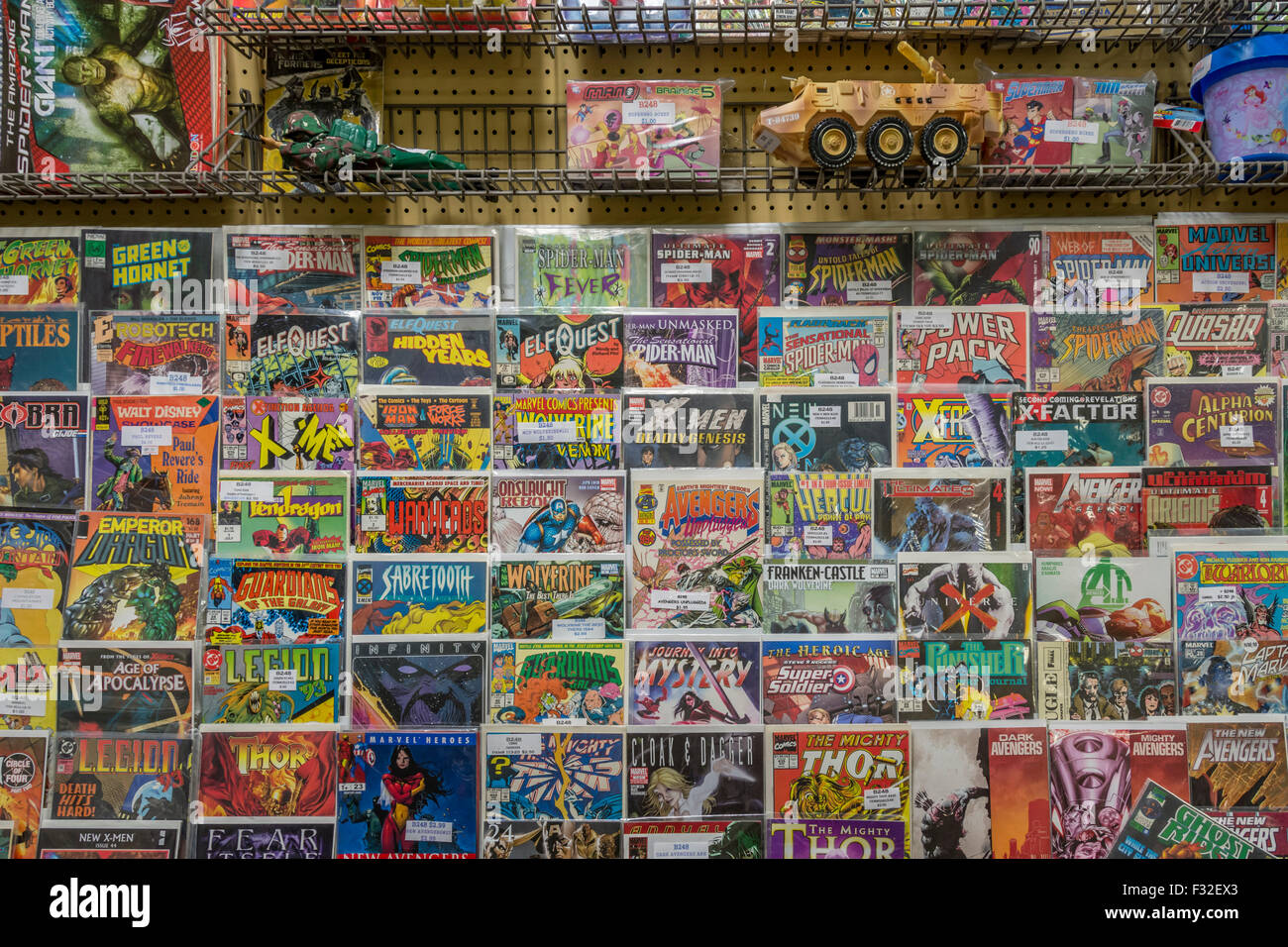
Comics are exciting, and most of us love them. In the everyday eye, writing such interesting stories seems to be a straight forward task, but in reality, there is a lot of writing these pieces than meets the eye. It is because the process of writing comics has remained a mystery to most people.
In reality, you need to put more time and effort into the preparation if you want to make your comic a worthy read. You ought to put in time researching, think visually, and then plan out the structure of your comic. You must also consider working with an artist who will help you bring your story to life using beautiful images.
Nevertheless, that shouldn’t scare you. There are lots of materials available that can guide you into writing an interesting comic story. Want to write a comic novel? Here is a guide on some of the steps you can follow to write a piece that comic fans will love:
- Come up With a Compelling Story
Before creating a comic, you should have a story that the comic will be based on. Most of the best comics you see today are based on some books you have read. So a good story is the basis of a great comic. You don’t have to draw to create comics. Ensure you have several characters in your story. Most importantly, the characters should be well defined, with the main character coming out clearly.
Once you have the main character, create a conflict. By overcoming what is on the way, your main character should come out as a hero or a supervillain.
If you cannot think of a good story, you can always seek help from paper writing service. Most of these services will help you craft a creative story that you can use to write your comic.
- Think in Pictures
Writing for comics varies from writing a novel. It is because comics are based on dialogue and artistry. Always make the story visual and incorporate conversations that are short and concise. If you can replace a sentence with an image, then do so.
You should also be dynamic with your characters to make your story interesting. Allow your characters to make mistakes, get hurt, and then heal them in the most unexpected ways. Don’t make your hero a perfect figure; let them take charge and make wrong decisions that will cost them dearly.
- Structure Your Story
Now that you have the story, you should think about how to structure it. Think of the number of panels you’ll have on each page, how you want the panels to be, among other considerations.
Ideally, a well-structured comic should have about five panels on each page. To make your comic visually appealing, vary your panels from one page to another. Panels are the layout of the page; therefore, if you make them the same throughout, your book is bound to look dull.
The panels can be constructed based on the scene and the actions taking place. If, for instance, the scene is taking place in a high place, you can use the eagles’ eyes method to make your panels large and enable the audience to understand the action better. It is artistry work, so be sure to hire an artist whose style fits your particular story.
- Length and Format
Comics can be written in many formats. You can decide to write a short one-page story or a novel, or even publish a monthly series. The length and format you choose will depend on your preference and plot.
However, if you want to write a comic that makes you money for a long time, consider how marketable your story is. That’s the whole essence of doing research.
- Conduct Thorough Research
You don’t want to write a comic that no one will read just because it is similar to another popular cartoon or because it’s boring. So do research about the existing comics and read many stories and come up with the one-of-a-kind comic. I understand that’s difficult to do in an industry as productive as the comic industry.
However, do enough research and study how other comic writers bring out their superheroes. You should then create your superhero and get something to make him stand apart. Be as dynamic as possible, and try to break the standard mold with your story, and your comic story will be a successful read.
Conclusion
Writing a great comic story is about being creative, reading widely, and coming up with a story and characters that will be new yet so exciting to comic lovers. With some hard work and thorough research, you should be able to come with something interesting.
The post How Do I Write a Comic Story? appeared first on Berkeley Place.
from Berkeley Place https://ift.tt/2Xpyaly
https://ift.tt/3cntzET
MARVEL TEAM-UP #61-62 (1977)

In the aftermath of the last two-part story, which ended in a battle in the Baxter Building, Spider-Man inadvertently releases Super Skrull from his containment cell and it takes two issues and Human Torch and Ms. Marvel to recapture him.

Why Reed kept him at the Baxter Building, in the middle of a major metropolitan area, is beyond me. Ms. Marvel gets in a nut shot…

…before she takes a huge punch…

…And gives one.

Anyway, lots of punching and krakowing. After getting punched all the way to the Statue of Liberty, Ms. Marvel and Spider-Man get to talking…
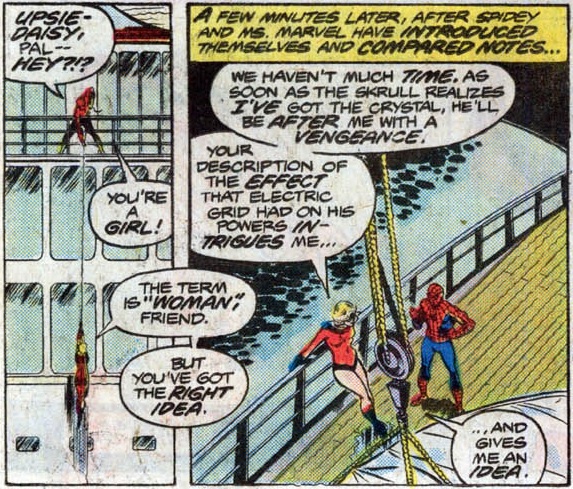
Skrull needs a crystal to…Know what? It doesn’t matter. He’s foiled in the end and the crystal isn’t really anything that comes back.
Good story and great art.
Creators: Chris Claremont and John Byrne
Grade: B-
For the complete history of the MU, year by year, go here.
And see my Ratings of Runs on comics here.
The post MARVEL TEAM-UP #61-62 (1977) appeared first on Berkeley Place.
from Berkeley Place https://ift.tt/3004opA
https://ift.tt/2yUESXB
Facebook page
Popular Posts
-
On January 25th, 2020, Shanghai Disneyland closed to the public. Within months the rest of the worldwide Disney Parks closed in response t...
-
Batman: Last Knight on Earth #2 (2019) pencil by Greg Capullo ink by Jonathan Glapion color by FCO Plascencia from Comics and nothin...
-
Aquaman v8 #58 - “Echoes of a Live Lived Well” (2020) pencil & ink by Miguel Mendonca color by Romulo Fajardo, Jr. from Comics and ...
Labels
Templateclue
Labels
Search This Blog
Blog Archive
- July 2020 (92)
- June 2020 (672)
- May 2020 (373)
- April 2020 (690)
- March 2020 (719)
- February 2020 (478)
About Me

- BLJ Mayank Blogger
- Web Devloper, Programmer, Script kiddies, Application Devloper, Blogger, Youtuber ...
Popular Posts
-
On January 25th, 2020, Shanghai Disneyland closed to the public. Within months the rest of the worldwide Disney Parks closed in response t...
-
Batman: Last Knight on Earth #2 (2019) pencil by Greg Capullo ink by Jonathan Glapion color by FCO Plascencia from Comics and nothin...
-
Aquaman v8 #58 - “Echoes of a Live Lived Well” (2020) pencil & ink by Miguel Mendonca color by Romulo Fajardo, Jr. from Comics and ...
-
Though we're going on about the fourth month of the COVID-19 pandemic, numbers of infected in a vast majority of the states in this coun...
-
Absolute Carnage v1 #1 (2019) textless page pencil by Ryan Stegman ink by J.P. Mayer color by Frank Martin Jr. from Comics and nothin...
-
Superman v5 #10 - “The House of El IV” (2019) pencil by Ivan Reis & Brandon Peterson ink by Ivan Reis, Joe Prado, Brandon Peterson, ...
-
HOUSE OF X and POWERS OF X continue to unfold, while Spider-Man, Black Widow, and from Comic Crusaders https://ift.tt/2wRt1Id https://ift...
-
The return of the Celestial Messiah to the Blue Area of the Moon sets off The post A GREAT INTERGALACTIC ALLIANCE HEADS TO EARTH IN THE EMP...
-
Batman/Superman v2 #4 - “Who Are the Secret Six? IV” (2019) pencil & ink by David Marquez color by Alejandro Sanchez from Comics an...
-
Red Sonja, paired with the half-vampire Chastity, is on the path to setting things right, The post PREVIEW: Red Sonja: Age of Chaos #3 app...
